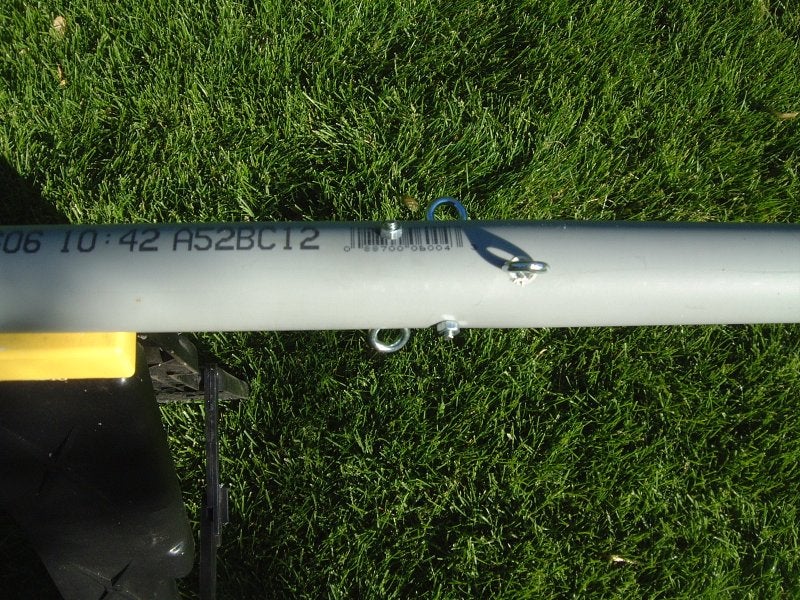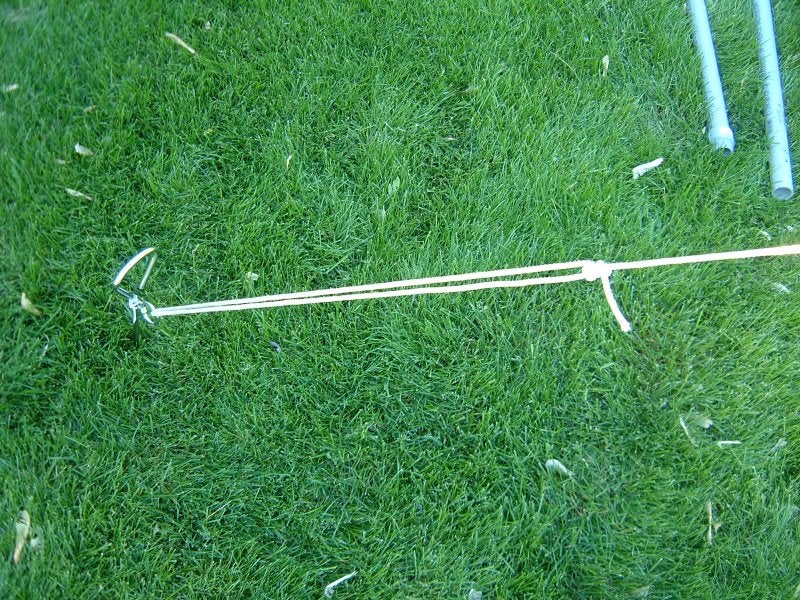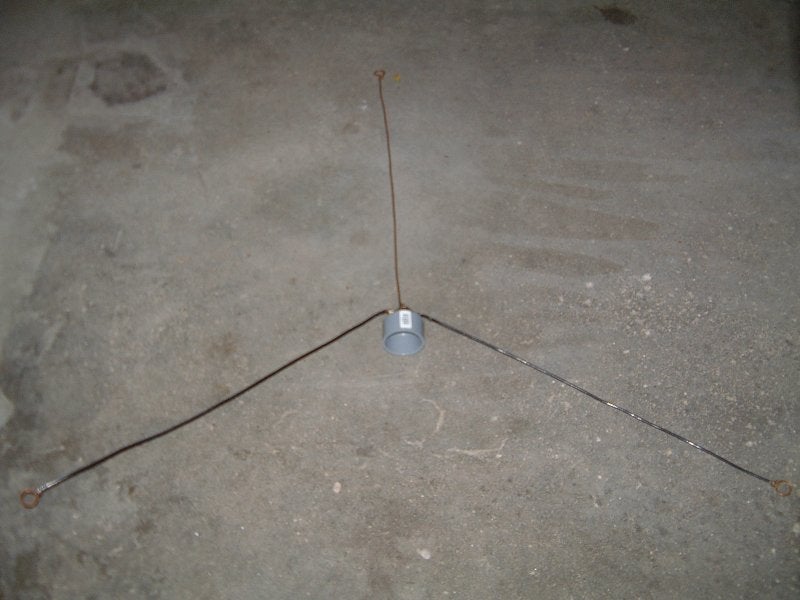Portable PVC Conduit Antenna Mast
How to build a PVC antenna mast.
Views expressed in this tutorial are those of "imarunner2."
Content supplied by "instructables circuits."
Accessed on 06 December 2020, 2340 UTC, Post 2442.
Source: https://www.instructables.com/Portable-PVC-Conduit-Antenna-Mast/
Please scroll down to read the article.
Thanks for joining us today.
Aloha de Russ (KH6JRM).
If you need a portable, lightweight antenna mast for home or field use, then this excellent tutorial from the "instructables.com" website is for you.
Step 1: Supplies
(3) 10' x 1 1/4" PVC conduit
(2) 1 1/4" PVC caps
(3) Screw anchors
(3) Eye bolts
100' x 3/16" nylon rope
Landscape timber spike
Step 2: Cut Conduit Into Portable Sections
Cut each length of conduit in half to make 5 foot sections. Five feet sections fit nicely in the trunk of my car. Adjust the dimensions to suit your needs.
PVC conduit has one flared end which works well for this project. The flared end should be at the bottom of each section in order to keep water out of the mast in wet weather. The very bottom section is made from a piece of PVC with no flare. The total length of this mast is 20 feet. It could be made taller by cementing a PVC coupling or matching threaded ends. If you go taller you may wish to add another set of eye bolts and guy ropes.
Step 3: Insert Eye Bolts for Guying
Measure up about 18 inches from the flared end of one section and drill 3 holes through the center of this section. Space the holes about an inch apart and rotate the conduit with each hole so the eye bolts will be approximately 120 degrees apart (measure the circumference and divide by 3). Insert the eye bolts and tighten the nuts.
I plan to run coax up through the center of the conduit so I also cut a slot in the bottom of the base section where the coax will exit.
This would also be a good time to number each section. The top 3 sections each have one flared end. The top section being number 1. The second section , with the eye bolts, number 2. The third section with a flared end, number 3. The bottom section with no flared end, number 4.
Step 4: Guy Rope
Cut the 100' rope into 3 equal lengths. Tie one end of each rope to each of the eye bolts.
Step 5: Base Anchor
You'll want to keep the base of the mast from moving. I expect to use my portable mast primarily in grassy areas so I've chosen to use a timber spike and a PVC cap to hold the bottom of the mast firmly in place. Drill a half inch hole through the end cap. Choose where you want the mast to stand and push or pound the spike into the ground through the cap.
Step 6: Screw in the Anchors
The anchors should be approximately 120 degrees apart and about 15 feet from the base. Start from the base and walk off the distance to each anchor location and screw it into the ground. Tie a tautline hitch with the loose end of each rope to each of the anchors. The tautline hitch is a knot that will allow you to make adjustments in each guy rope to hold the mast perfectly vertical.
Step 7: Attach the Antenna and Raise the Mast
I made this simple antenna for the amateur radio 2 meter band and afixed it to an end cap. Thread the coax through each section starting at the bottom and then attach it to the antenna. Set the antenna on the top section and assemble the sections from top to bottom while raising the mast vertically. Hold the mast in place while a helper takes up slack in the guy ropes.
(Note: I had to remove one of the eye bolts in order to thread the coax through that section.)










Comments
Post a Comment
Thank you for visiting my Amateur Radio Blog. I value your comments and suggestions. For Amateur Radio Antenna Topics and Discussions, stay here. For Amateur Radio News and Trends, please visit my news site at https://bigislandarrlnews.com.
Aloha es 73 de Russ (KH6JRM).